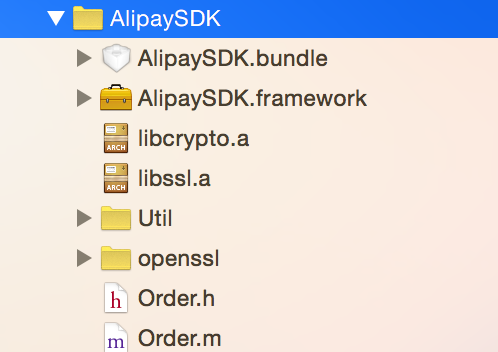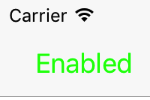實例解析iOS開辟中體系音效和自界說音效的運用
1、拜訪聲響辦事
添加框架AudioToolBox和要播放的聲響文件,別的還須要在完成聲響辦事的類中導入該框架的接口文件:
#import <AudioToolbox/AudioToolbox.h>
播放體系聲響,須要兩個函數是AudIOServicesCreateSystemSoundID和AudIOServicesPlaySystemSound,還須要聲明一個類型為SystemSoundID類型的變量,它表現要應用的聲響文件。
-(IBAction) playSysSound:(id)sender {
SystemSoundID sourceID;
//挪用NSBundle類的辦法mainBundle前往一個NSBundle對象,該對象對應於以後法式可履行二進制文件所屬的目次
NSString *soundFile = [[NSBundle mainBundle] pathForResource:@"soundeffect" ofType:@"wav"];
//一個指向文件地位的CFURLRef對象和一個指向要設置的SystemSoundID變量的指針
AudIOServicesCreateSystemSoundID((CFURLRef) [NSURL fileURLWithPath:soundFile], &soundID);
AudioServicesPlaySystemSound(soundID);
}
2、提示音和震撼
1、提示音
和體系聲響的差異:
假如手機處於靜音狀況,則提示音將主動觸發震撼;
播放提示音須要的函數是AudioServicesPlayAlertSound而不是AudioServicesPlaySystemSound。
2、震撼
只須要挪用AudioServicesPlaySystemSound()辦法,傳入kSystemSoundID_Vibrate常量便可。
假如裝備不支撐震撼(如iPad 2),那末也沒緊要,只是不會震撼。
3、AVFoundation framwork
關於緊縮的Audio文件,或許跨越30秒的音頻文件,可使用AVAudioPlayer類。
1、AVAudioPlayer也須要曉得音頻文件的途徑;
2、這個類對應的AVAudioPlayerDelegate有兩個拜托辦法:
1)、audioDidFinishPlaying:successfully:當音頻播放完成以後觸發;
2)、audioPlayerEndInterruption:當法式被運用內部打斷後,從新回到運用法式的時刻觸發。
4、MediaPlayer framwork
可使用MPMoviePlayerController播放片子文件(似乎只能播放H.264、MPEG-4 Part2 video格局),還可以播放互聯網上的視頻文件。
5、挪用和自界說音效實例實例
需求年夜致分為三種:
1.震撼
2.體系音效(無需供給音頻文件)
3.自界說音效(需供給音頻文件)
我的對象類的封裝:
//
// WQPlaySound.h
// WQSound
//
// Created by 念茜 on 12-7-20.
// Copyright (c) 2012年 __MyCompanyName__. All rights reserved.
//
#import <UIKit/UIKit.h>
#import <AudioToolbox/AudioToolbox.h>
@interface WQPlaySound : NSObject
{
SystemSoundID soundID;
}
/**
* @brief 為播放震撼後果初始化
*
* @return self
*/
-(id)initForPlayingVibrate;
/**
* @brief 為播放體系音效初始化(無需供給音頻文件)
*
* @param resourceName 體系音效稱號
* @param type 體系音效類型
*
* @return self
*/
-(id)initForPlayingSystemSoundEffectWith:(NSString *)resourceName ofType:(NSString *)type;
/**
* @brief 為播放特定的音頻文件初始化(需供給音頻文件)
*
* @param filename 音頻文件名(加在工程中)
*
* @return self
*/
-(id)initForPlayingSoundEffectWith:(NSString *)filename;
/**
* @brief 播放音效
*/
-(void)play;
@end
//
// WQPlaySound.m
// WQSound
//
// Created by 念茜 on 12-7-20.
// Copyright (c) 2012年 __MyCompanyName__. All rights reserved.
//
#import "WQPlaySound.h"
@implementation WQPlaySound
-(id)initForPlayingVibrate
{
self = [super init];
if (self) {
soundID = kSystemSoundID_Vibrate;
}
return self;
}
-(id)initForPlayingSystemSoundEffectWith:(NSString *)resourceName ofType:(NSString *)type
{
self = [super init];
if (self) {
NSString *path = [[NSBundle bundleWithIdentifier:@"com.apple.UIKit"] pathForResource:resourceName ofType:type];
if (path) {
SystemSoundID theSoundID;
OSStatus error = AudioServicesCreateSystemSoundID((__bridge CFURLRef)[NSURL fileURLWithPath:path], &theSoundID);
if (error == kAudioServicesNoError) {
soundID = theSoundID;
}else {
NSLog(@"Failed to create sound ");
}
}
}
return self;
}
-(id)initForPlayingSoundEffectWith:(NSString *)filename
{
self = [super init];
if (self) {
NSURL *fileURL = [[NSBundle mainBundle] URLForResource:filename withExtension:nil];
if (fileURL != nil)
{
SystemSoundID theSoundID;
OSStatus error = AudioServicesCreateSystemSoundID((__bridge CFURLRef)fileURL, &theSoundID);
if (error == kAudioServicesNoError){
soundID = theSoundID;
}else {
NSLog(@"Failed to create sound ");
}
}
}
return self;
}
-(void)play
{
AudioServicesPlaySystemSound(soundID);
}
-(void)dealloc
{
AudioServicesDisposeSystemSoundID(soundID);
}
@end
挪用辦法步調:
1.參加AudioToolbox.framework到工程中
2.挪用WQPlaySound對象類
2.1震撼
WQPlaySound *sound = [[WQPlaySound alloc]initForPlayingVibrate];
[sound play];
2.2體系音效,以Tock為例
WQPlaySound *sound = [[WQPlaySound alloc]initForPlayingSystemSoundEffectWith:@"Tock" ofType:@"aiff"];
[sound play];
2.3自界說音效,將tap.aif音頻文件參加到工程
WQPlaySound *sound = [[WQPlaySound alloc]initForPlayingSoundEffectWith:@"tap.aif"];
[sound play];
【實例解析iOS開辟中體系音效和自界說音效的運用】的相關資料介紹到這裡,希望對您有所幫助! 提示:不會對讀者因本文所帶來的任何損失負責。如果您支持就請把本站添加至收藏夾哦!
- iOS 完成多署理的辦法及實例代碼
- IOS 陀螺儀開辟(CoreMotion框架)實例詳解
- ajax 三種完成辦法實例代碼
- 解析iOS10中的極光推送新聞的適配
- iOS中 LGLAlertView 提醒框的實例代碼
- IOS 仿時間網選票UI實例代碼
- iOS 雷達後果實例詳解
- IOS 粒子體系 (CAEmitterLayer)實例詳解
- iOS 動畫 —— 禮花後果實例具體
- 周全解析iOS中同步要求、異步要求、GET要求、POST要求
- 在Swift中應用JSONModel 實例代碼
- iOS 9 Core Spotlight搜刮實例代碼
- 實例講授iOS中的UIPageViewController翻頁視圖掌握器
- 實例講授iOS中的CATransition轉場動畫應用
- 應用Swift代碼完成iOS手勢解鎖、指紋解鎖實例詳解




